Many new amputees and even some caregivers find themselves puzzled by two similar-sounding terms: stump sock and shrinker sock. Though they look alike at first glance, they serve different purposes at different stages of recovery.
Using the wrong type can slow down healing or affect the fit of a future prosthesis. In this article, we’ll give you a clear, side-by-side understanding of these two socks, explain when and why each should be used, and guide you in selecting the right product depending on your stage of amputation care.
What Is a Stump Sock?
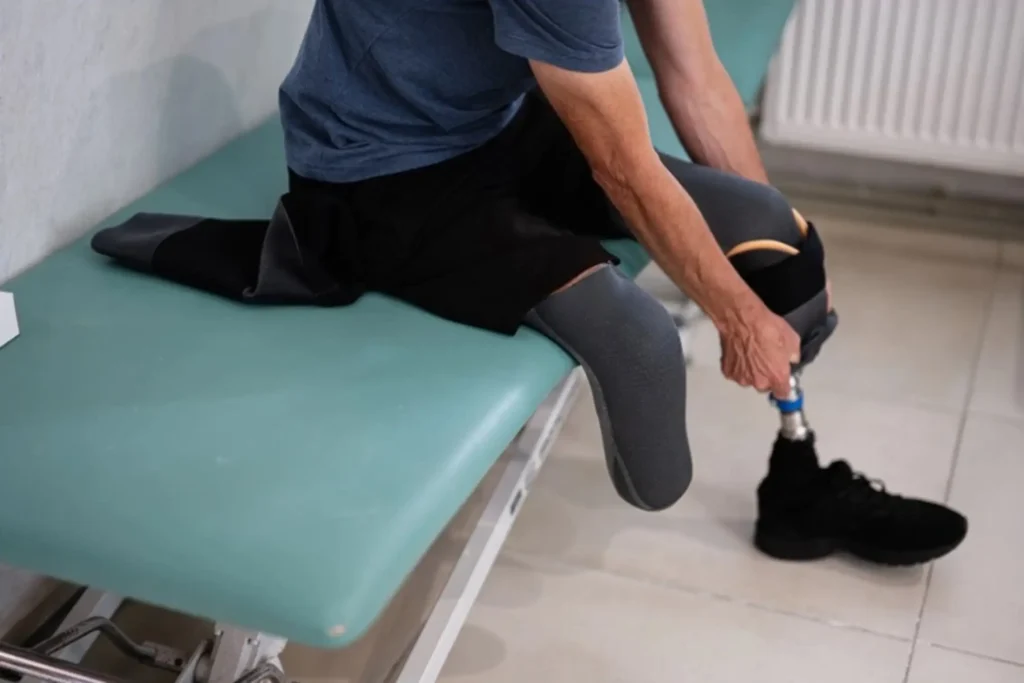
A stump sock, also called a post-amputation sock, prosthetic sock or residual limb sock, is a soft, seamless fabric covering worn over an amputated limb. Its main role is to reduce friction, absorb sweat, and protect the skin—especially when wearing a prosthetic liner or during everyday use without a prosthesis.
Depending on the shape of the limb and the level of sensitivity, options range from lightweight, elastic designs to thicker, cushioned ones. For instance, a below-knee stump sock may offer more targeted compression around the calf, while an above-knee version focuses on broader coverage.
👉 Want to learn more? Here is our article on what a stump sock is.
What Is a Shrinker Sock?
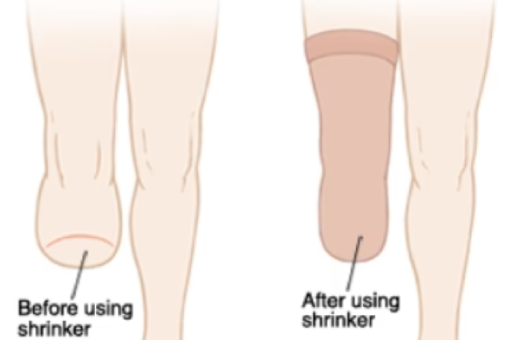
A shrinker sock, also called a residual limb shrinker, is a compression garment used to reduce swelling and shape the limb immediately after amputation. Unlike stump socks, they are tight-fitting and may feel firm or snug, which is necessary to provide therapeutic pressure.
They are particularly helpful in reducing post-operative swelling (edema), managing pain, and speeding up the healing process by preventing fluid accumulation.
Key Differences Between Stump Socks and Shrinker Socks
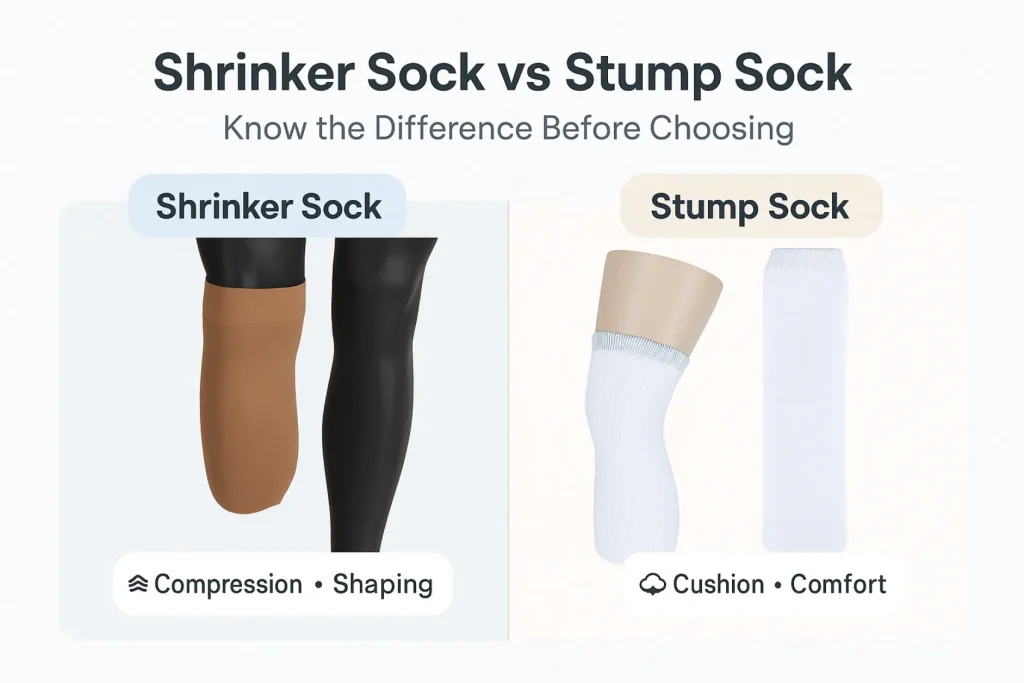
When recovering from an amputation, understanding the right sock to wear can be confusing — but choosing incorrectly can cause discomfort, slow healing, or affect how your prosthetic fits. Here’s how these two essential socks differ, and why each plays a unique role in your journey.
Material and Construction: Designed for Different Needs
- Shrinker socks are made from strong, medical-grade elastic fabrics that apply firm, consistent pressure. This tight fit isn’t meant to feel cozy — it’s built to control swelling and help your limb shrink to the right shape after surgery. Think of them as a therapeutic hug that guides your residual limb’s healing.
- On the other hand, stump socks focus on comfort and protection. Made from soft, breathable materials like cotton, wool, or fibers with antibacterial properties, they act as a gentle cushion. Their seamless or flat-seam design reduces irritation, while multiple thickness options (plies) let you adjust your prosthetic fit as your limb changes throughout the day.
Function and Purpose: What They Really Do for You
- Right after surgery, your limb is often swollen, sensitive, and unstable. Shrinker socks work quietly but powerfully to reduce swelling and shape your residual limb. Though they might feel tight and less comfortable, their compression is crucial to prepare your limb for a properly fitting prosthetic later.
- Once you move into prosthetic use, stump socks become your daily shield. They protect delicate skin from rubbing and pressure caused by the prosthetic socket, wick away sweat, and provide padding. Plus, because your limb size can fluctuate, layering stump socks of different thicknesses helps keep your prosthetic fit snug and pain-free.
Fit and Wearability: Comfort vs. Compression
- Shrinker socks must fit tightly to be effective — they may feel firm or even restrictive, which is necessary for managing swelling. Wearing them requires guidance from your healthcare provider to avoid issues like impaired circulation.
- Stump socks are designed for comfort. They fit snugly but gently, prioritizing softness and breathability to protect your skin during extended prosthetic wear. Their flexible thickness options also make it easy to customize your fit daily.
Medical Guidance and Usage
- Typically, shrinker socks are prescribed and monitored by your surgical team or prosthetist during the early healing phase. Their use is time-sensitive and part of your post-op care plan.
- In contrast, stump socks are usually chosen by the user with input from the prosthetist during and after prosthetic fitting. Users can manage their use more independently, adjusting ply and quantity based on comfort and limb changes.
Prosthetic Compatibility
A key difference is that shrinker socks are not designed to be worn inside a prosthetic socket. Their role is healing, not prosthetic comfort.
Stump socks, however, are made specifically to be worn under prosthetics, enhancing fit and preventing skin problems during everyday wear.
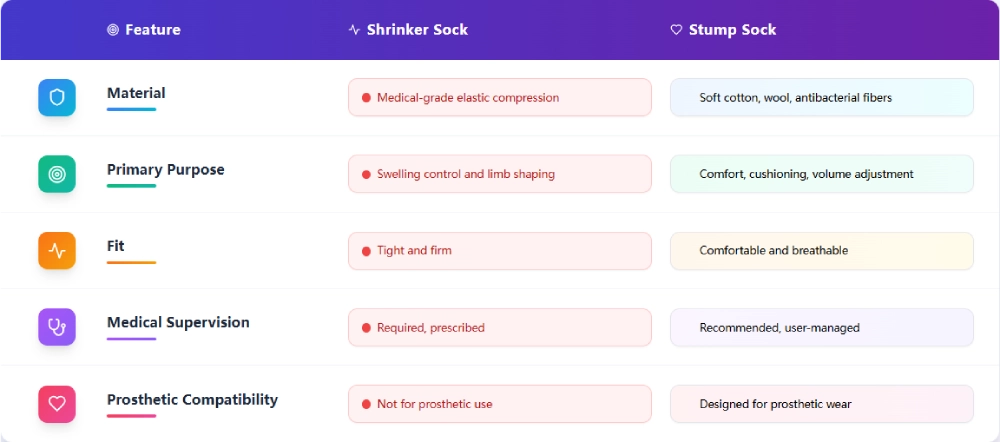
When to Use Each Sock: Usage Stage and Transition Guide
Knowing the right time to use a shrinker sock versus a stump sock is essential for effective recovery and comfort. Each serves a distinct role in the healing and prosthetic fitting journey.

Post-Surgery Phase (0 to 3 Months): Shrinker Sock Use
- Purpose: Immediately after amputation surgery, the residual limb is swollen and sensitive. Shrinker socks are prescribed to provide controlled compression that reduces swelling (edema) and helps shape the limb for prosthetic fitting.
- Duration: Patients typically wear shrinker socks continuously during this phase, removing only for skin care or medical inspections.
- Medical Oversight: Regular check-ups ensure the compression level is appropriate to avoid circulatory issues or skin damage. Shrinker socks may need frequent replacement as limb volume changes rapidly during this time.
Transition Phase (Around 3 Months): Moving from Shrinker to Stump Socks
- Purpose: As swelling decreases and the limb stabilizes, the patient begins preparing for prosthetic fitting. This phase requires gradually reducing shrinker sock use and starting stump sock wear for comfort and volume adjustment.
- Process:
- Shrinker socks are worn less frequently, often only when swelling reoccurs.
- Stump socks are introduced during prosthetic trial fittings to improve socket fit and protect skin.
- Patients may carry multiple stump socks of different thickness (ply) to accommodate daily limb size changes.
- Advice: This phase should be guided by the prosthetist or rehabilitation team to ensure a smooth transition.
Long-Term Prosthetic Use: Stump Sock Maintenance
- Purpose: Once the prosthesis is regularly worn, stump socks become part of daily attire. They provide cushioning, reduce friction, and allow for volume adjustments without compromising comfort.
- Usage:
- Patients wear stump socks under the prosthetic socket, changing socks based on activity, sweat, and residual limb condition.
- It is recommended to have several stump socks in rotation, washed regularly to maintain hygiene.
- Adjustment: Changes in limb volume due to weight fluctuations or physical activity may require switching stump sock ply to maintain socket fit.
Common Mistakes and How to Avoid Them
- Wearing shrinker socks too long, beyond the recommended healing phase, can cause skin damage or discomfort under a prosthesis.
- Using stump socks too early, before swelling reduces, may lead to poor compression and healing delays.
- Not replacing worn-out socks, which reduces effectiveness and increases skin irritation risk.
- Ignoring medical advice on compression levels and sock usage timing.

Summary & Your Next Move
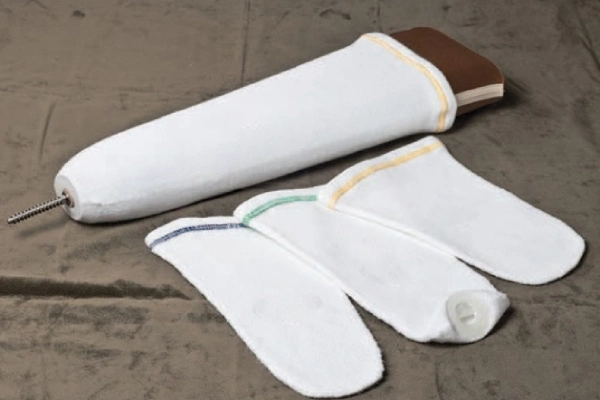
If you represent a medical clinic, retailer, or brand looking to supply either stump socks or shrinker socks, understanding these differences and usage stages is vital. Proper education and product recommendations can improve patient outcomes and satisfaction.
We, Max Hosiery, specialize in producing both high-quality shrinker socks and stump socks with customizable options for materials, ply, and sizes. We welcome inquiries from healthcare providers, distributors, and brands seeking reliable supply partners.
FAQ
Can I wear a stump sock and a shrinker sock together?
No. These two serve different purposes and should not be used at the same time. Follow your clinician’s guidance.
Are shrinker socks custom-made or off-the-shelf?
Both options exist. Some are standard sizes, while others may be custom-fitted based on your limb’s shape.
Can I wash these socks in a machine?
Yes, but always follow care instructions. Gentle cycle with mild detergent is usually recommended.
Do these socks work for upper-limb amputees too?
Yes. Both stump and shrinker socks are available for arms and legs, but sizing and use vary.
How long should I wear a shrinker sock each day?
That depends on your recovery stage. Initially, you may wear it several hours, eventually all day or overnight.
